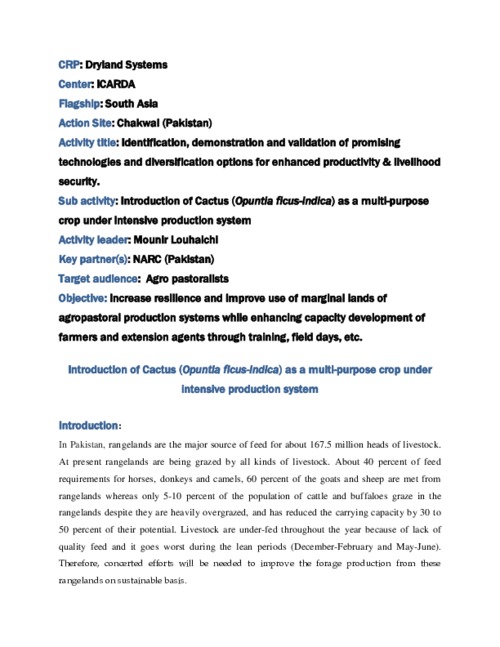Resource information
In Pakistan, rangelands are the major source of feed for about 167.5 million heads of livestock. At present rangelands are being grazed by all kinds of livestock. About 40 percent of feed requirements for horses, donkeys and camels, 60 percent of the goats and sheep are met from rangelands whereas only 5-10 percent of the population of cattle and buffaloes graze in the rangelands despite they are heavily overgrazed, and has reduced the carrying capacity by 30 to 50 percent of their potential. Livestock are under-fed throughout the year because of lack of quality feed and it goes worst during the lean periods (December-February and May-June). Therefore, concerted efforts will be needed to improve the forage production from these rangelands on sustainable basis. In this situation, the cactus plant (Opuntia spp.) has a potential to produce high biomass of green forage –ranging from 30-250 tons/ha and have a source of essential nutrients. The introduction of cactus can reduce the pressure on scarce water resources and rangeland vegetation. Simply during feeding, pads would be harvested, cut into small pieces, and distributed to animals - a ‘cut and carry’ methodology that is common in many cactus-cultivating countries including Brazil, South Africa, and Tunisia. The main objective of plantation of cactus in the dry area of Chakwal is to overcome the pressure exerted on already deteriorated rangelands and non-availability of feed during scarcity months. Furthermore, the fruit of cactus can be sold at the local market to general additional income and enhance livelihood of agro-pastoral communities.


